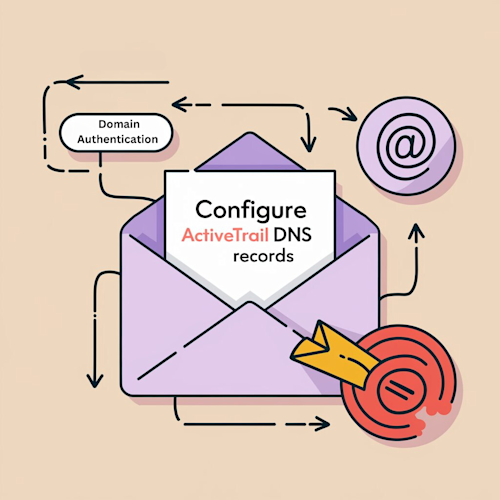
Setup ActiveTrail SPF, DKIM, DMARC Records
Check your domain for DMARC, DKIM, SPF and MX records. Get a free report.
Setup ActiveTrail SPF, DKIM, DMARC Records for Domain Authentication
This article will guide you how to authenticate the ActiveTrail domain for sending emails.
Email authentication is a set of standards that ensures your emails come from a legitimate source and are safe for the recipient to open. SPF, DKIM, and DMARC are commonly used standards for email authentication.
SPF (Sender Policy Framework) helps prevent email spoofing by allowing domain owners to specify which mail servers are authorized to send email on behalf of their domain.
DKIM (DomainKeys Identified Mail) adds a digital signature to your email headers, enabling the recipient's server to verify that the email has not been altered during transit and that it indeed comes from your domain.
DMARC (Domain-based Message Authentication, Reporting, and Conformance) builds on SPF and DKIM. It allows domain owners to specify how receiving mail servers should deal with emails that fail SPF or DKIM checks.
Configure AcctiveTrail DNS Records:
-
On the dashboard, click on the profile icon and go to Settings.

-
In the Account tab, scroll down to the bottom of the page.

-
Look for the text "Click here for the account DNS records."
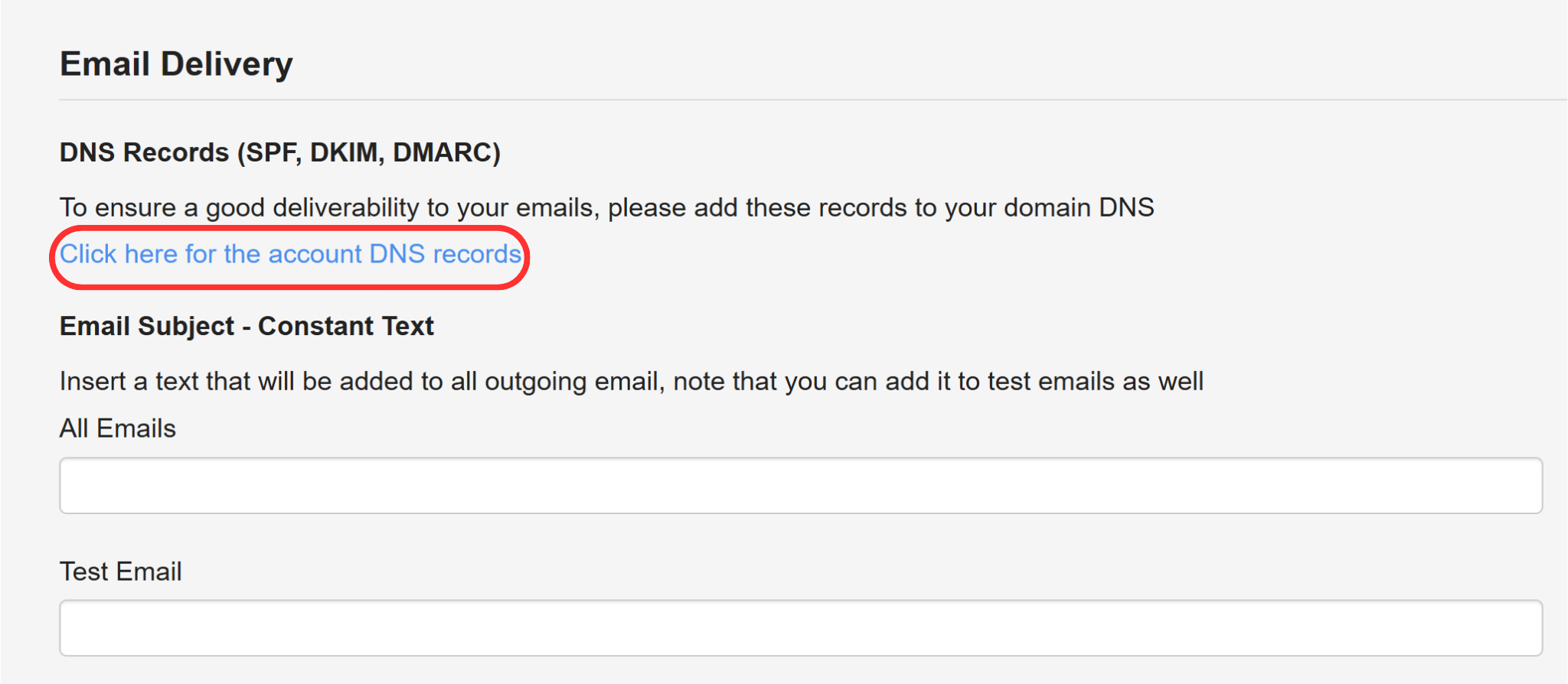
-
In the next window, you will get CNAME records. Add them to your DNS provider.
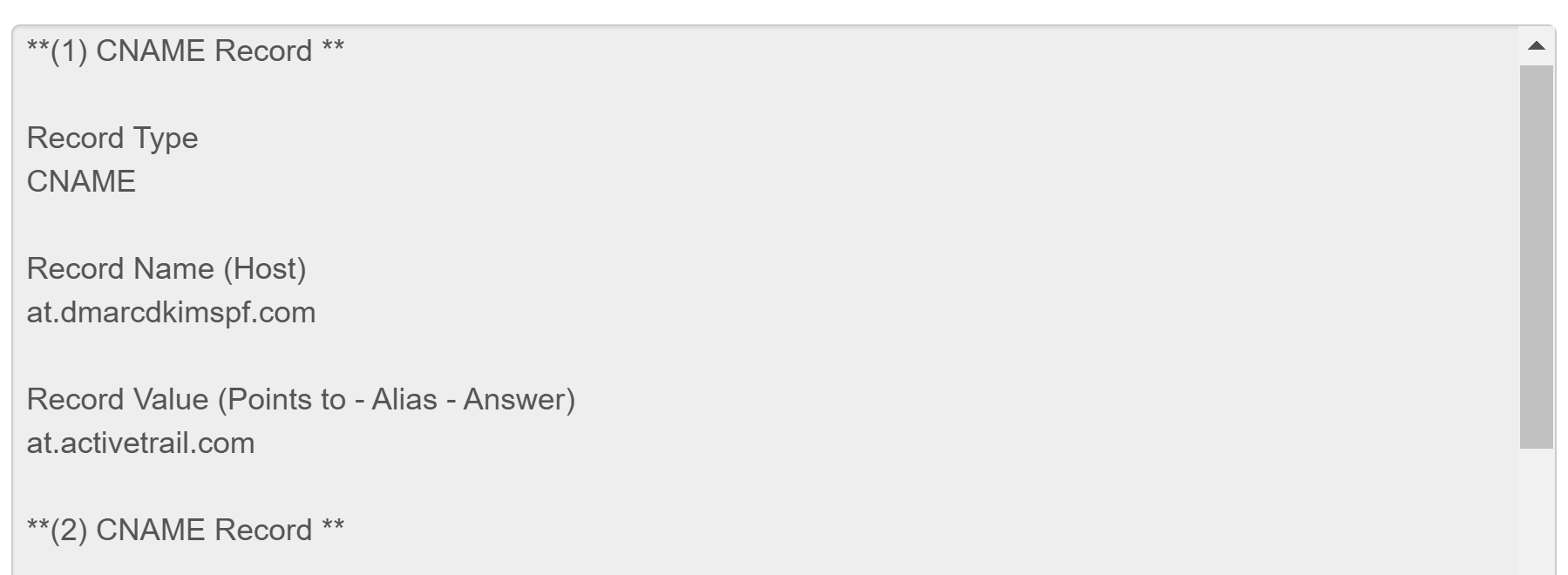
Setup ActiveTrail CNAME Records in DNS provider:
Login to your DNS provider and select your domain.
Go to the DNS tab and click Add Record.
Select Record type CNAME.
Copy the Record Name (Host) and paste it into the Name field of the DNS dashboard.
Copy and paste the Record Value into the Target/Alias/Answer file.
-
Turn off the proxy toggle (if available) and click Save.
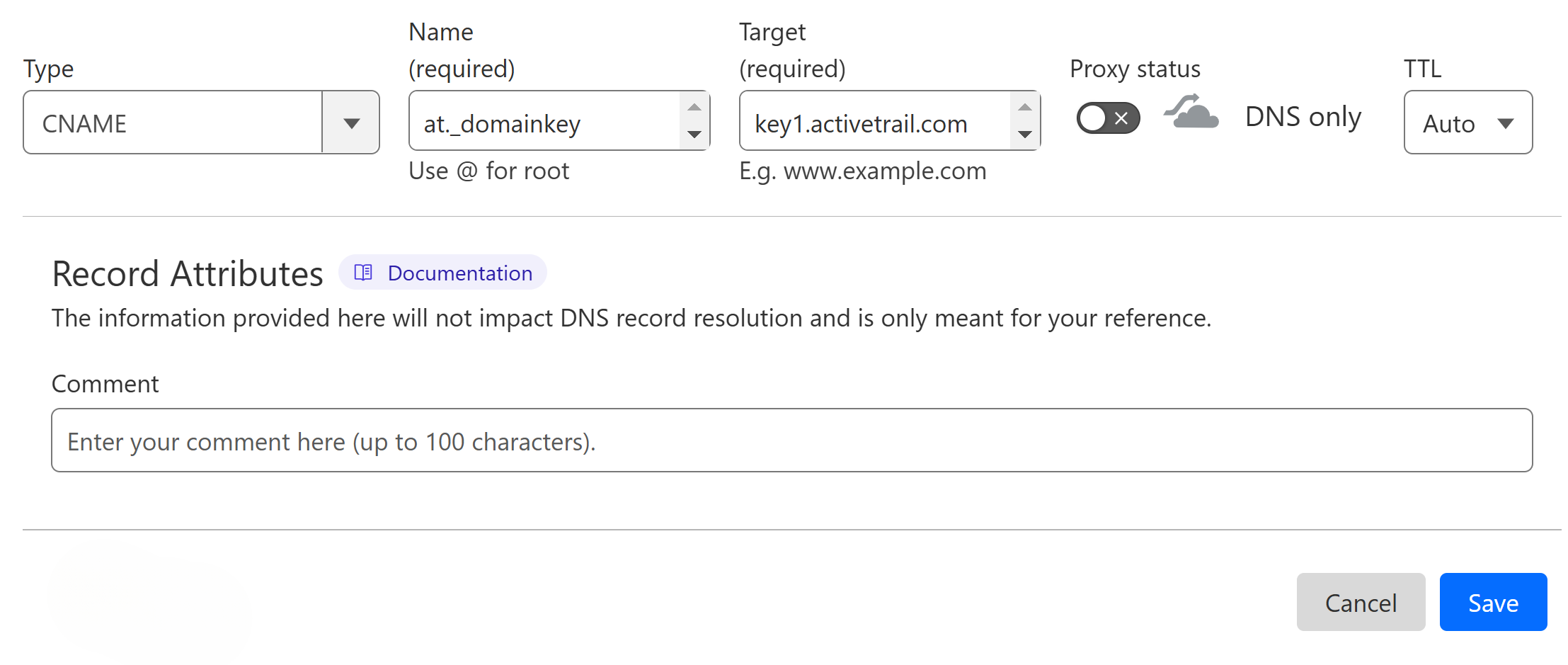
Add all the CNAME records by following the same steps.
Setup DMARC Record for ActiveTrail:
The DMARC value provided by ActiveTrail only monitors emails (p=none) and does not block unauthorized senders. Also, no dashboard is provided for the DMARC reports, where you can see the email performance insights.
To address all these issues, DmarcDkim.com has built a tool that guides you through implementing a strict DMARC policy and gives you access to the DMARC reports and analytics.
Go to the DMARC check tool.
-
Add your domain name and click Check.
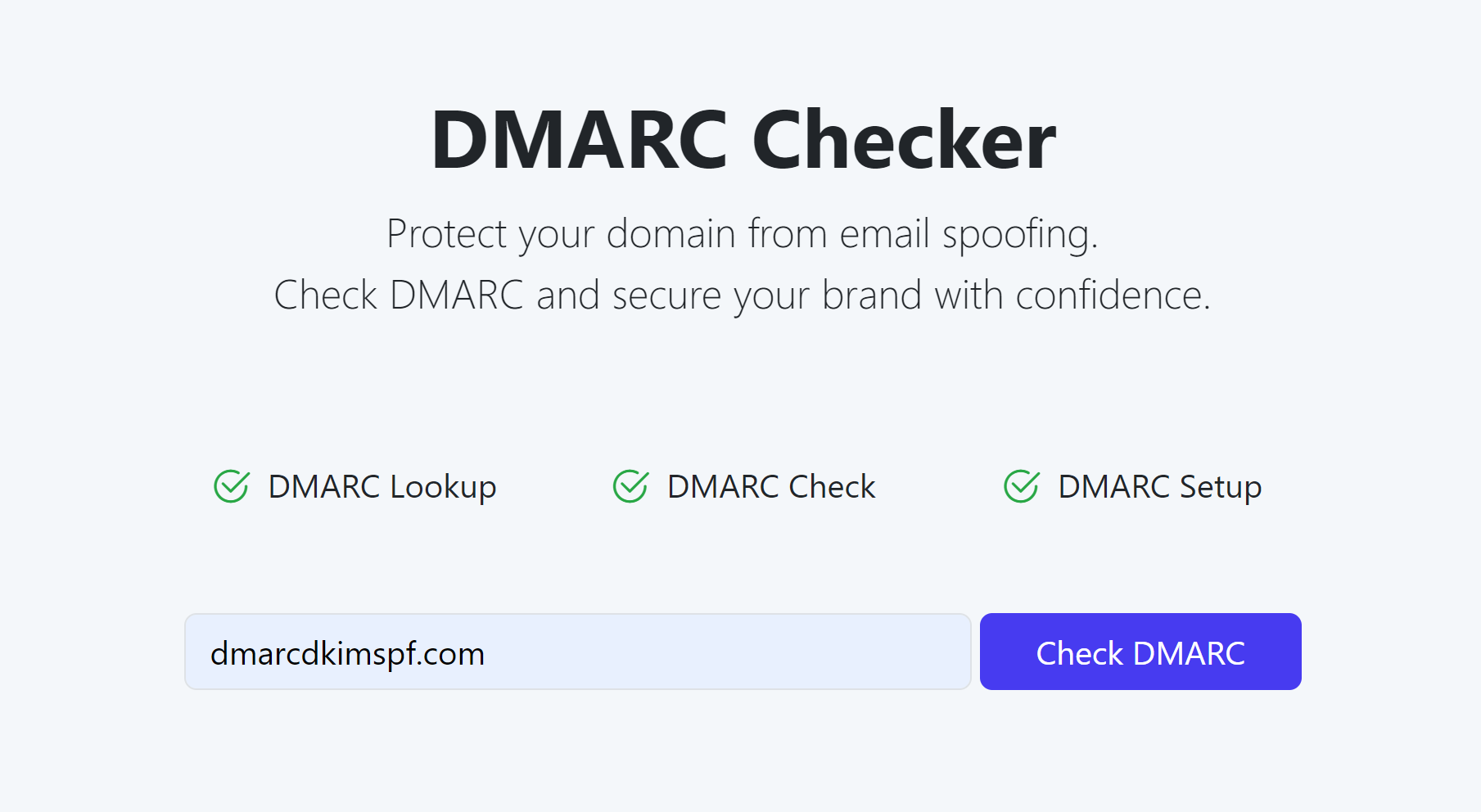
-
Copy the TXT DMARC record and add it to your DNS dashboard.
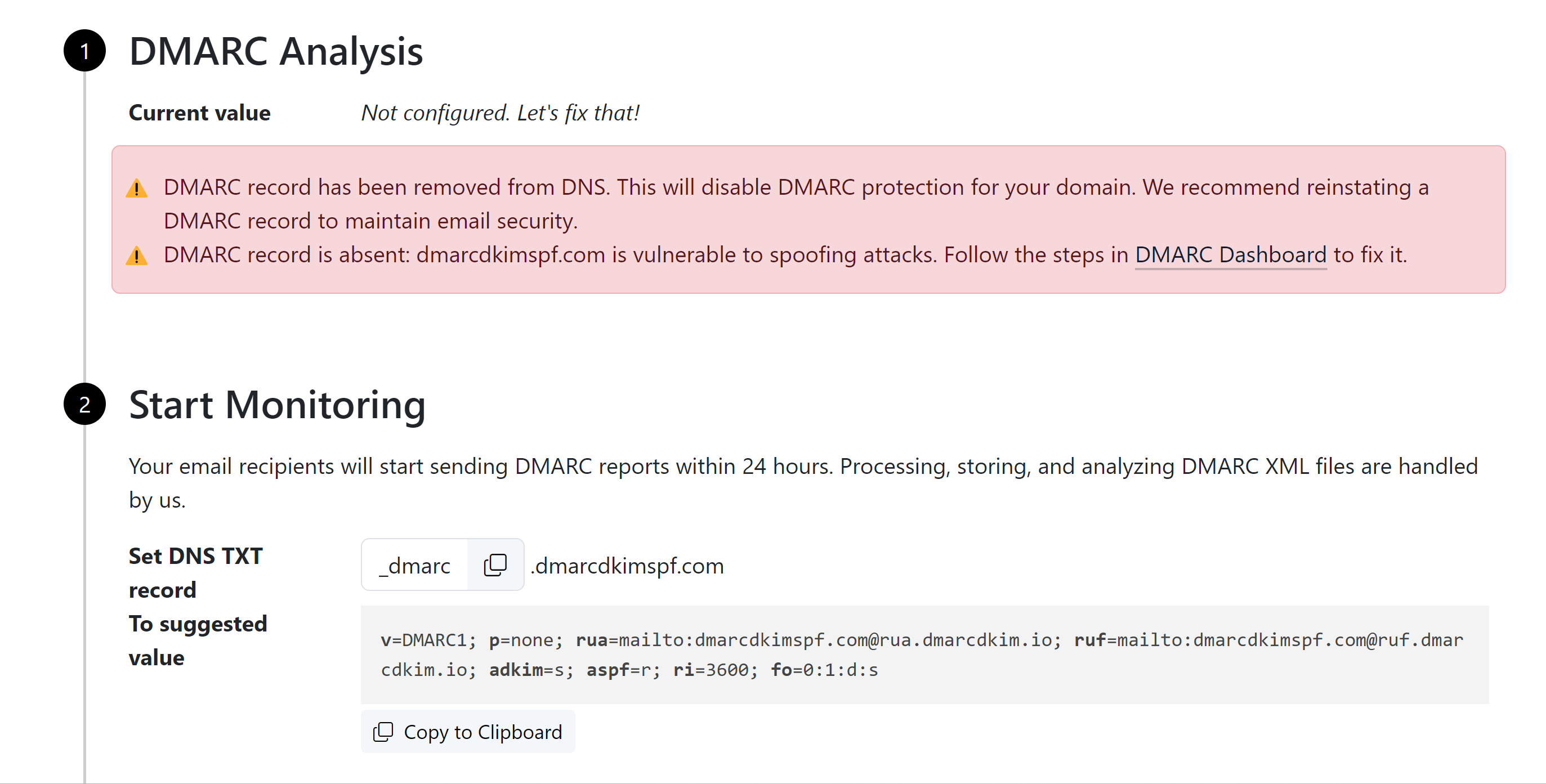
-
Sign up to access the DMARC reports and analytics dashboard.
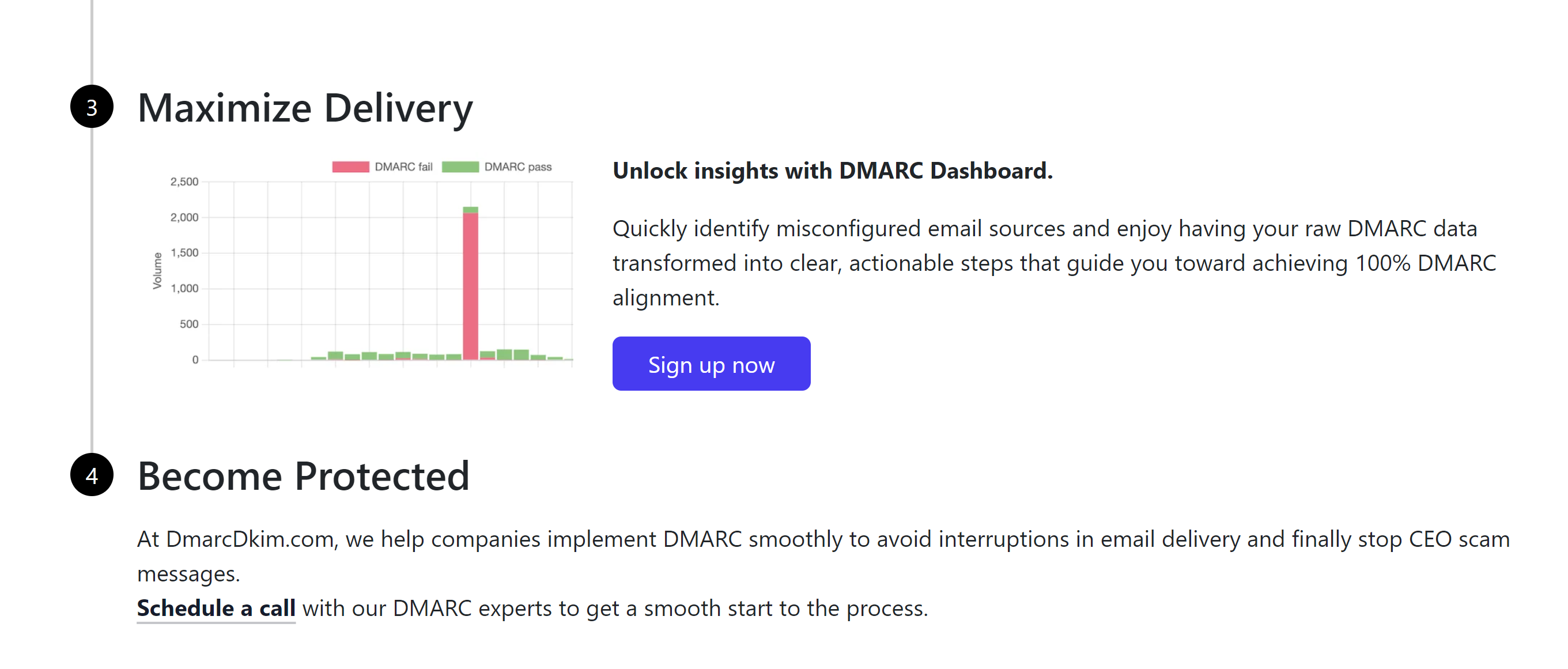
ActiveTrial DNS Records Verification:
After adding all the records, give the servers 24 hours to update DNS changes. If the records are not authenticated after 24 hours, it points to a misconfiguration in your DNS setup.
To troubleshoot the domain authentication errors, contact a DmacrDkim.com expert.
Check domain and follow the instructions to nail down your DMARC configuration.
No expert knowledge needed!







